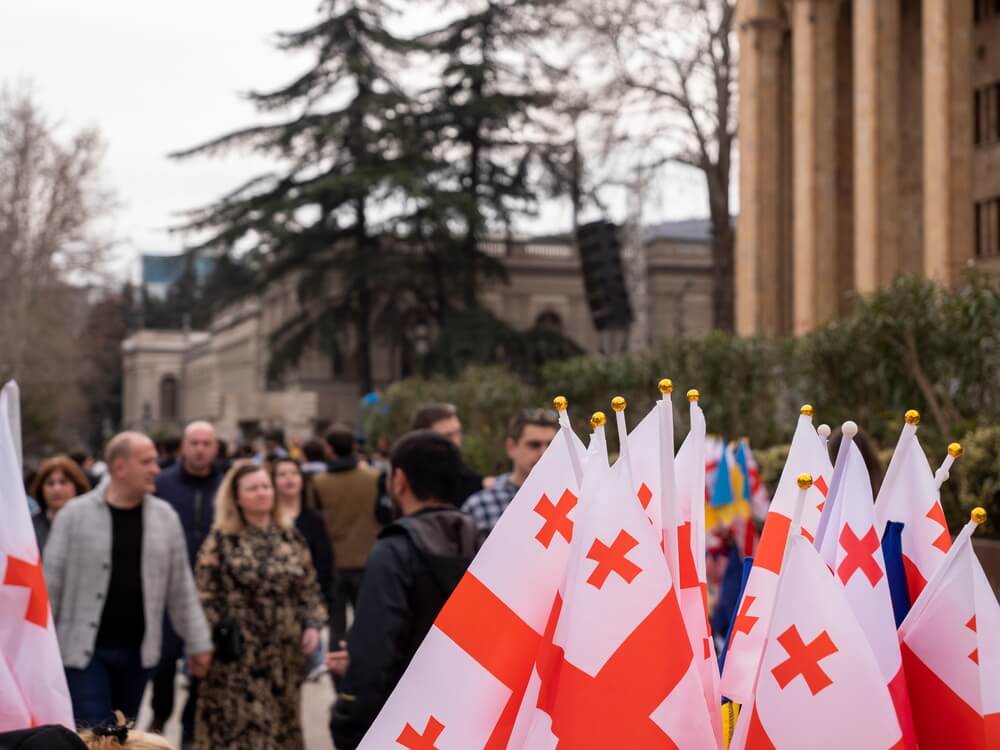Under pressure from its invasion of Ukraine, Russia has been forced to adjust its presence in the Caucasus region, using moves that signal a weakening of its influence in its traditional backyard.
At the beginning of the week, Moscow suddenly started to withdraw its military contingent from the Azerbaijani province of Nagorno-Karabakh, over which there has been a dispute with neighbouring Armenia for years.
About 2,000 Russian soldiers are withdrawing from Karabakh because their peacekeeping mission lost its meaning after last year's occupation by Azerbaijan and the exodus of almost all hundred thousand Armenian residents.
Russian troops came to the disputed region in 2020 as a security guarantor and were supposed to stay until 2025. But the mission was terminated a year and a half earlier, and the positions of the Russian troops were already occupied by the Azerbaijani police.
Kremlin spokesman Dmitry Peskov confirmed news of the withdrawal of Russian troops from Karabakh but did not elaborate. It is a well-founded assumption that the contingent will be involved in the fighting in Ukraine, given the lack of men and equipment at the front, which is an absolute priority for Moscow.
Armenia's strategic mistake
For Armenia, the withdrawal of Russian troops has only symbolic significance because, even while the contingent was deployed, it did not fulfil its peace-making objective.
However, there is satisfaction with this development in the capital, Yerevan, given that the country has been trying to get rid of the Russian military presence and defence ties with Moscow for a long time.
Prime Minister Nikol Pashinyan called the alliance with Moscow "a strategic mistake" and said that Armenia "had not seen the advantages" of the presence of the Russian army in Karabakh, but also in Armenia itself.
After the departure of the contingent from Karabakh, about 3,000 Russian soldiers remained in Armenia
After the departure of the contingent from Karabakh, about 3,000 Russian soldiers remained in Armenia, distributed primarily along the borders with Turkey and Iran. Whether they remain or withdraw from Armenia will be a more significant indicator of Russia's attitude towards the Caucasus region than the current withdrawal from the Karabakh region.
Moscow has not yet responded to Armenia's request from last March about its soldiers withdrawing from Zvartnots International Airport in the capital, Yerevan. They have been there since the collapse of the USSR in 1992, and their role at the airport has never been precisely defined.
The Armenian government's request is in line with its shift away from Russia, which coincides with the start of the Russian invasion of Ukraine. Since then, Yerevan has cooled security ties with Moscow, particularly within the Collective Security Treaty Organisation (CSTO) alliance.
Are Russian troops staying?
However, despite the government's strong advocacy, Armenia finds it challenging to move closer to the West and the EU due to Russia's military presence on its territory.
Even though the Russian units in Armenia are relatively small and equipped with outdated equipment (T-72 tanks and S-300 systems), they are still a visible threat to any serious move by Armenia from the Russian fold.
But faced with a lack of resources on the Ukrainian front, it would not be a big surprise if Russia initiated the withdrawal of troops from Armenia, as it has now done with the contingent in Karabakh.
If this happens, it will mean that Moscow will rely on its "soft" presence as the principal means of influencing Armenia, which is potentially more efficient than a military one.
Armenia is still tied to Russia through strong business ties
Armenia is still tied to Russia through strong business ties, given that since the start of the aggression against Ukraine, the volume of trade has increased many times.
The weakness of Armenia's institutions allows the country to become one of the most significant channels for bypassing Western sanctions against Russia. During the first year of the war in Ukraine alone, exports from Armenia to Russia increased by nearly 200%, as much imports as from Germany, for example.
The nearly identical growth continued in 2023, so the total exchange between Russia and Armenia increased by more than 2,000% during the aggression against Ukraine.
Recipe from Georgia
In place of a stronger political-economic hybrid presence in Armenia, Russia would probably intensify its attempts to undermine the pro-European administration and support the rise of pro-Russian groups.
A similar recipe is being applied in Georgia, another Caucasus state that Russia considers part of its historical area.
 Despite the pressure of street protests by pro-European forces in Georgia, the parliament adopted a controversial law, modelled after Russia, on the so-called "foreign agents"
Despite the pressure of street protests by pro-European forces in Georgia, the parliament adopted a controversial law, modelled after Russia, on the so-called "foreign agents"
Despite the pressure of street protests by pro-European forces, the parliament adopted a controversial law in principle, modelled after Russia, on the so-called "foreign agents", which provides scope for repression of the critical public.
Moscow's ambition is to influence the parliamentary elections in Georgia, scheduled for October, so that its satellites remain in power. Given that Georgia was granted candidate status last year, their job would be to undermine reforms and the country's progress towards membership of the EU.
The reorientation of Russian influence in the Caucasus from the traditional military to the levers of "soft" control of political and economic processes is already under way.
If the model applied in Georgia produces results in the October elections, it might be applied in Armenia as well, which would probably mean the complete withdrawal of troops from its territory and sending them to Ukraine, where Russia needs them more.